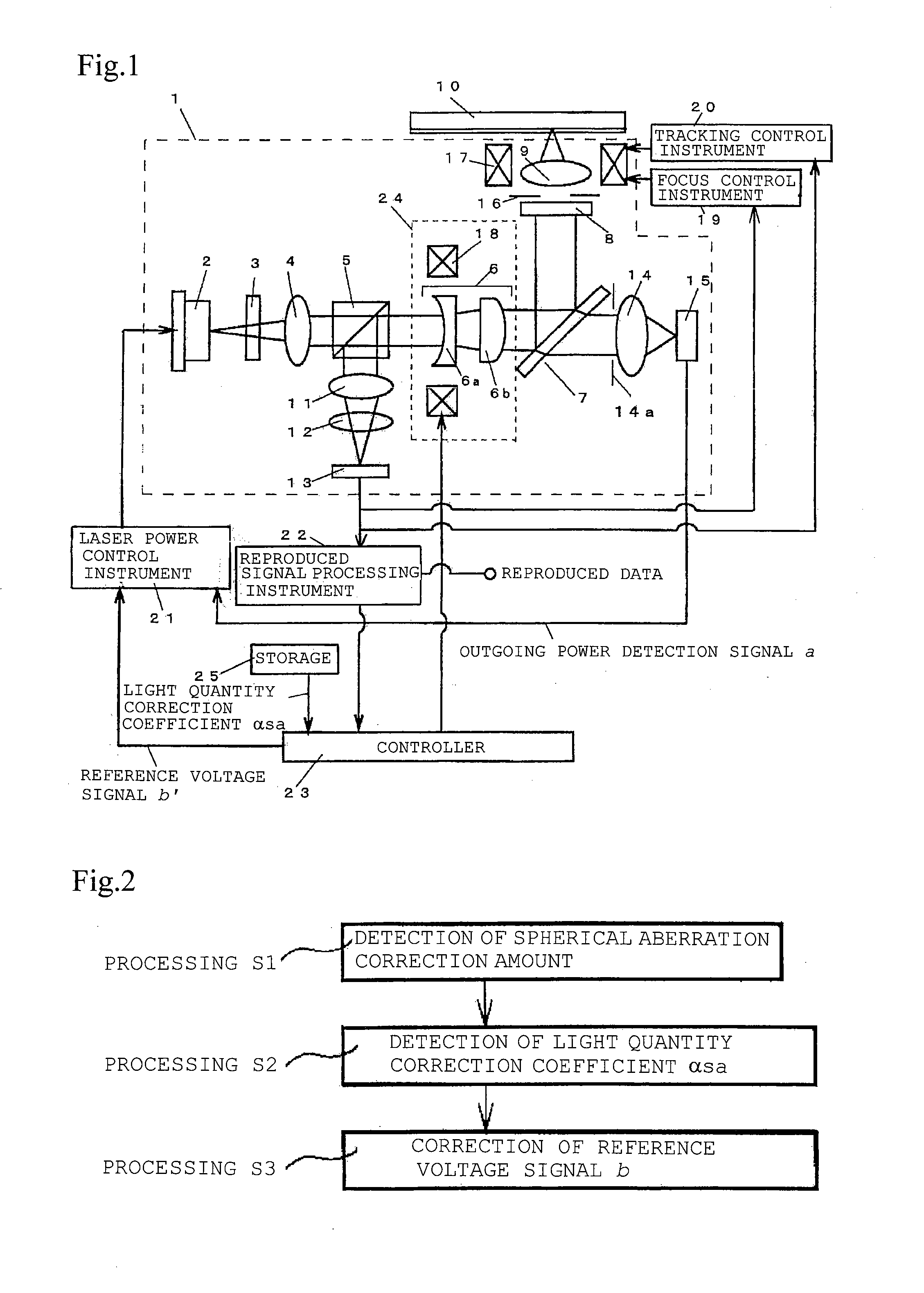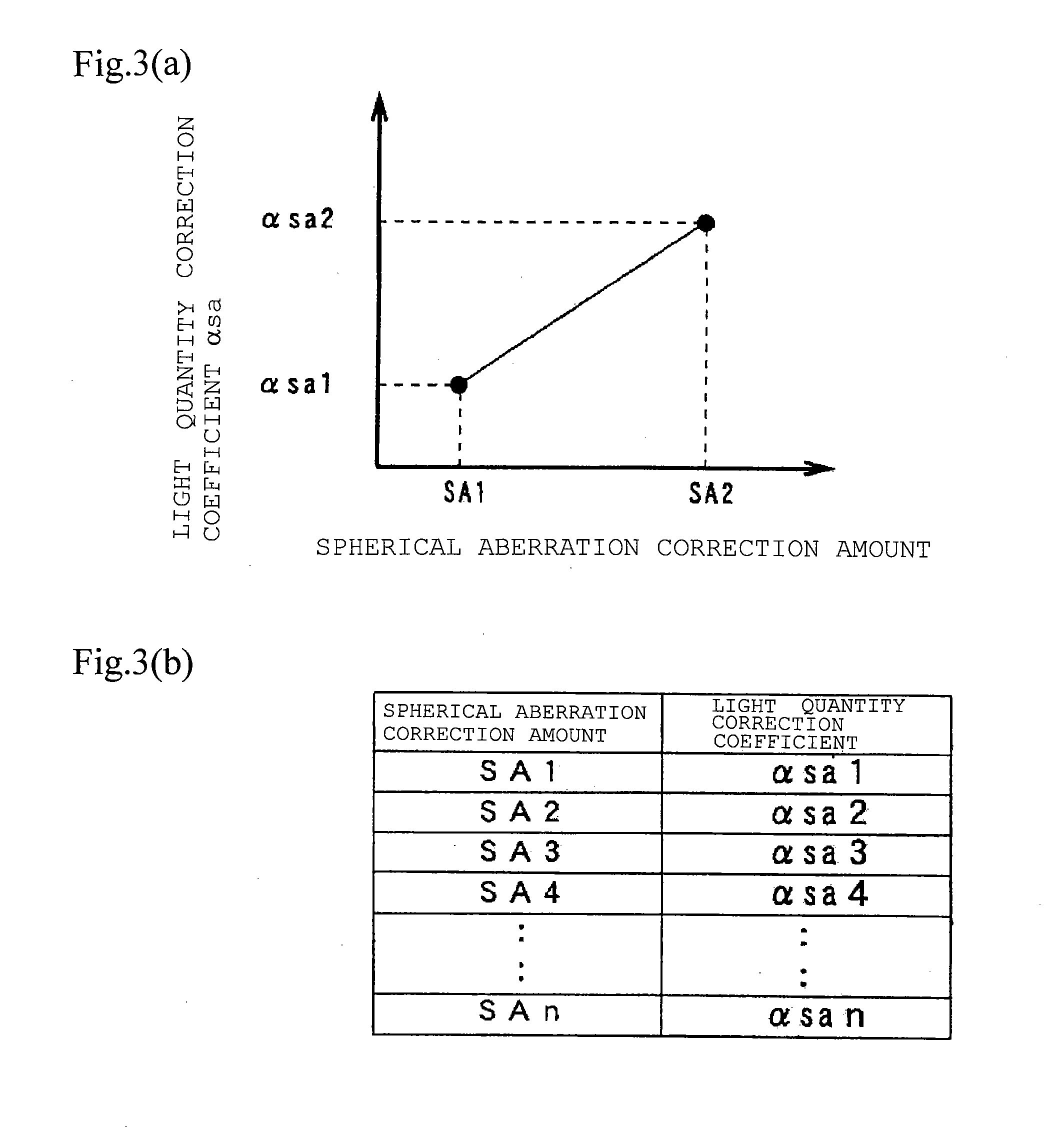Light Formation Apparatus and Control Method of Light Information Apparatus
- Summary
- Abstract
- Description
- Claims
- Application Information
AI Technical Summary
Benefits of technology
Problems solved by technology
Method used
Image
Examples
embodiment 1
[0120]FIG. 1 is a schematic diagram of an optical information apparatus in a first embodiment. In FIG. 1, the same reference numerals are used for the same constituents as those in FIG. 13, and their detailed description is omitted.
[0121] In FIG. 1, reference numeral 14 denotes a lens which condenses light, permeating the mirror 7, to the light quantity detector 15, reference numeral 15 denotes the light quantity detector which transforms a received light beam into an electric signal, and light quantity detection instrument is constituted of the lens 14 and light quantity detector 15. In addition, reference numeral 22 denotes reproduced signal processing instrument, reference numeral 23 denotes a controller, and reference numeral 25 denotes storage.
[0122] A light beam received by the photodetector 13 is transformed into an electric signal, which is supplied to the focus control instrument 19, tracking control instrument 20, and reproductive signal processing instrument 22.
[0123] ...
embodiment 2
[0155]FIG. 8 is a schematic diagram showing structure of an optical information apparatus in a second embodiment. In FIG. 7, the same reference numerals are used for the same constituents as those in FIG. 1 or 13, and their detailed description is omitted. In addition, in FIG. 8, reference numeral 40 denotes an optical recording medium having two layers of recording layers, reference numeral 48 denotes focus control instrument, reference numeral 49 denotes tracking control instrument, and reference numeral 53 denotes a controller.
[0156]FIG. 9 shows an example of a schematic diagram of an optical recording medium having two layers of recording layers. It has constitution of a surface 87, a protective layer 82, a first recording layer 83, an interlayer 85, a second recording layer 84, and a base material 86, which is a back, from an optical head side in order. The protective layer 82 and interlayers 85 are transparent media such as a resin. Since the interlayer 85 is between the firs...
PUM
 Login to View More
Login to View More Abstract
Description
Claims
Application Information
 Login to View More
Login to View More - R&D
- Intellectual Property
- Life Sciences
- Materials
- Tech Scout
- Unparalleled Data Quality
- Higher Quality Content
- 60% Fewer Hallucinations
Browse by: Latest US Patents, China's latest patents, Technical Efficacy Thesaurus, Application Domain, Technology Topic, Popular Technical Reports.
© 2025 PatSnap. All rights reserved.Legal|Privacy policy|Modern Slavery Act Transparency Statement|Sitemap|About US| Contact US: help@patsnap.com



